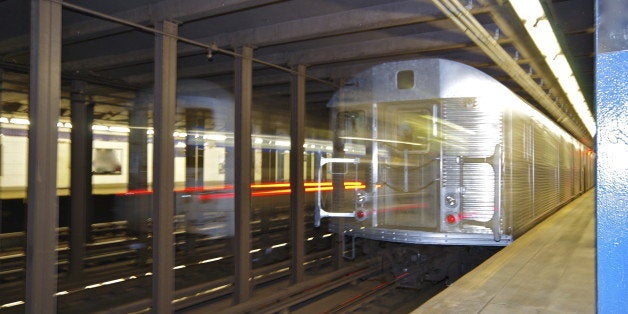
Funding the next five-year capital plan for the Metropolitan Transportation Authority (MTA) is a crucial priority for the New York City region, and fortunately the funding gap has narrowed. MTA Chair Thomas Prendergast recently announced initiatives that will reduce the hole in the $29.8 billion plan from $15 billion to $9.8 billion. Yet the public debate on MTA funding tends to focus on how much should come from the City or the State, setting up a false choice that should be avoided. The real question should be: how much funding should come from motorists versus taxpayers and commuters?
The choice between the City and the State is a false one, because, while the two jurisdictions are alternatives for levying taxes on the regional economy, the fundamental source of revenue is the same. New York City taxpayers fund $1.0 billion annually in operating and capital support to the MTA, as well as an estimated $4.2 billion of the nearly $6 billion allocated to the MTA from state-authorized regional and statewide taxes. For example, New York City employers pay 73 percent of the MTA's $1.3 billion regional payroll tax.
The real choice in funding mass transit is between three different types of revenue: fares (paid by mass transit riders), tax subsidies (paid by taxpayers in general), and motor vehicle cross-subsidies (paid by drivers, currently through bridge and tunnel tolls, state license and registration fees, and gasoline taxes). The MTA transit services receive funding of 48 percent, 40 percent, and 12 percent from each source, respectively - with the low motor vehicle cross-subsidies way out of line. The Citizens Budget Commission recommends that drivers cover more than twice that proportion of the costs.
Why should motor vehicle drivers pay when they don't use mass transit? First, they benefit, because it reduces congestion by removing other drivers from the road. Second, motor vehicles produce air pollution and greenhouse gas emissions that should be reduced through financial incentives. Vehicle emissions amount to roughly one-third of all greenhouse gases.
A Citizens Budget Commission report released earlier this year analyzed four options for increased motor vehicle cross-subsidies: increased fees for vehicle registration, a higher gasoline tax, new tolling policies, and a new vehicle-miles-traveled (VMT) tax. The report - titled "More Than Fare: Options for Funding Future Capital Investments by the MTA" - concluded that increases in vehicle registration fees and motor fuel taxes have limited potential to close the funding gap. A new VMT tax and dramatically altered tolling policies such as those in the plan advocated by the Move NY coalition have the greatest potential.
The Move NY plan would reduce tolls on outer borough bridges and require new tolls at all entry points to the Manhattan central business district. With a VMT tax, vehicles are charged based on the number of miles driven, and GPS technology allows the tax to be modified in the future to vary charges based on the congestion on the roads traveled. It's not unlike the tax that New York State imposes on commercial trucks based on a vehicle's weight and number of miles traveled.
A pilot program in Oregon provided participating cars with GPS devices to record in-state mileage. The data was transmitted when drivers bought fuel at certain service stations. In the future, new technology may combine GPS and E-ZPass-like hardware to record and transmit miles for periodic billing and payment.
The public debate over funding from the City or the State should be replaced by a discussion of how to generate more funding for the MTA from motor vehicle cross-subsidies - with "50-25-25" the best model. Over the long term there should be a VMT tax, which could also fund transportation infrastructure state-wide. More immediate funding should come from enhanced tolling policies, including East River bridge tolls and other congestion pricing mechanisms, or higher vehicle registration fees.
The author is President of the Citizens Budget Commission.
